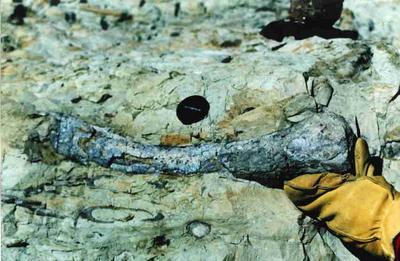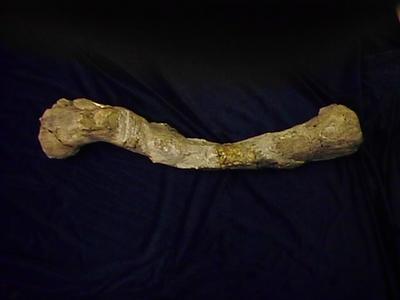
|
29 August, 2003Hello Friends! Well this journal entry marks the start of my Antarctic Experience. Since I did not want to waste your time and mine, I held off making journal entries until I had something worthwhile to report. I now have a project, or more accurately several! After a couple of false starts, I have been invited to work with Dr. William Hammer's www.augustana.edu/academ/geology/antrctca.htm group who is going back to Mount Kirkpatrick, which is in the Trans-Antarctic Mountains to retrieve more of the fossil remains of Cryolophosaurus, the dinosaur he found there during the 1990-91 expedition. This work by itself is pretty exciting for several reasons, first, it is the only dinosaur of its type known, second, it was found in a parcticularly interesting portion of the Dry Valleys which means at one time Antarctica was radically different, and third, it means working at an altitude of about 15,000 feet which presents interesting challenges of its own. So this project is quite special but as they say, wait, there is more! Dr. Hammer will be investigating other sites in the Dry Valleys that he hopes will be fossil bearing, this means we will be looking at some interesting strata in and about the Beardmore Glacier area which makes the project even more complex since travel to these sites are by helicopter. Because the helio resources are limited, I may not be able to go to every site with Dr. Hammer, however operating out of the Beardmore Glacier Camp will be several other research groups who have extended an invitation to me to join them when possible to help them in their work. Among them are: Dr. Allan Ashworth, www.ndsu.nodak.edu/instruct/ashworth/ Who is the Distinguished Professor & Chair at North Dakota State, and I quote from his website,
"(Dr. Ashworth) teaches and conducts research in paleontology and stratigraphy. He is currently working on the paleoecology of a terrestrial fossil assembage from the Neogene Sirius Group in the Transantarctic Mountains, about 500 km from the South Pole. He is also studying full-glacial beetle faunas from the Pacific Northwest and from southern Chile. As a result of a collaborative study involving testing of biogeographic hypotheses using molecular genetics, he has become progressively more interested on how the results of paleontological studies might be used to predict the response of insects to global warming." In short, he his looking at the fossilized remains of weevils in an effort to determine paleo-climate of Antarctica. Also working out of the Beardmore camp will be Dr. Molly Miller, a professor at Vanderbilt University, www.vanderbilt.edu/AnS/geology/mmiller.htm her current research , and I quote from her website, "is on reconstructing the benthic communities of freshwater ecosystems and how they have changed through the Phanerozoic. Focused on the spectacularly well exposed upper Paleozoic to Mesozoic freshwater sequence in the Transantarctic Mountains, she uses biogenic structures and extent of bioturbation as a proxy for fossils of bottom-dwellers, and interprets the type and abundance of benthic animals in different environments (e.g. lakes, streams) during this crucial period in the development of freshwater habitats. This work led her Antarctic party's discoveries of the oldest crayfish and crayfish burrows, significant in suggesting that crayfish have been important in structuring freshwater ecosystems for tens of millions of years longer than previously thought. Development of a semi-quantitative method for assessing bioturbation allows for comparison of benthic activity rocks of similar age deposited in the same environment in high latitude vs. low latitude settings and for comparison of animal activity in marine vs. freshwater depositional systems." In short, Dr. Miller looks at the structure and content of the sediment layers and determines the paleo-climate of Antarctica. This is just the tip of the "iceberg" with respect to what will be happening down south this research season so please keep logging in to these pages for updates. I have included some pictures of the work and environment that I will be experiencing this December. See you on the web!
Contact the TEA in the field at . If you cannot connect through your browser, copy the TEA's e-mail address in the "To:" line of your favorite e-mail package. |







